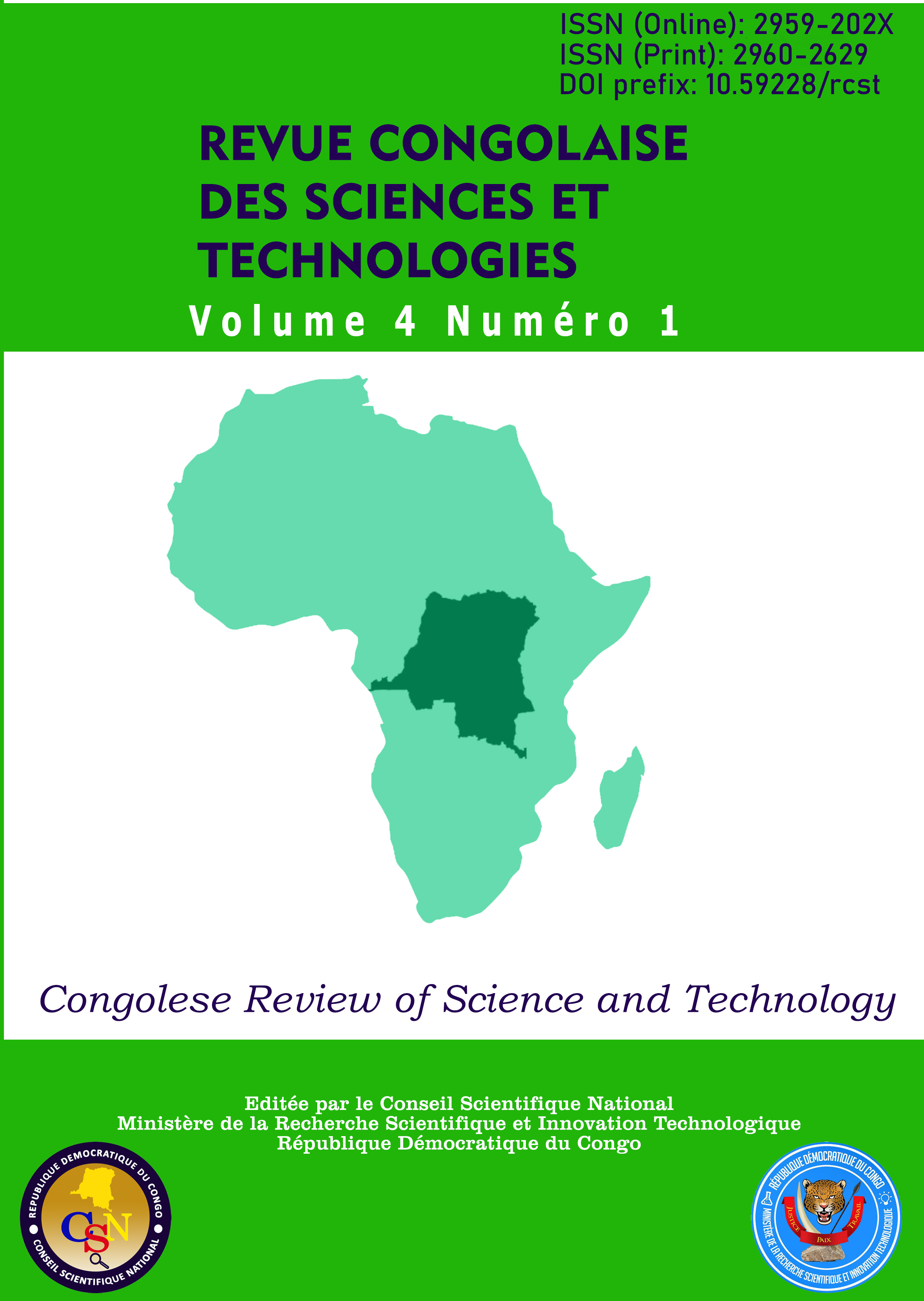Mole hydatiforme partielle avec un foetus vivant chez une mère VIH : à propos d’un cas
Contenu principal de l'article
Résumé
Décrire un cas de môle hydatiforme partielle avec un foetus vivant chez une mère VIH.
Il s’agit d’une patiente primipare âgée de 30 ans, vivant avec le VIH sous antirétroviraux, ayant connu 4 avortements spontanés avant cette grossesse. Aucun symptôme suspect de la maladie trophoblastique n’avait été signalé. Avec une charge virale initiale indétectable et un taux de CD4 de 283 cellules/ μL, aucun dosage de béta gonadotrophine chorionique humaine n’avait réalisé. Pas d’échographie obstétricale réalisée durant l’évolution de sa grossesse. Notons qu’elle a développé une anémie à 9,7g/dl après l’accouchement. Elle avait accouché à 36 semaines de gestation par voie basse d’un bébé vivant de sexe masculin pesant 2100g, de morphologie normale avec APGAR 6/10/10. Le bébé était mis dès la naissance sous névirapine en prophylaxie. Le compte-rendu anatomopathologique du placenta était compatible avec une môle hydatiforme partielle.
Il s’agit d’une découverte fortuite après un examen anatomopathologique du placenta. Ce cas de mole hydatiforme partielle avec un foetus vivant que nous décrivons avait échappé à toutes les investigations cliniques et paracliniques.
Il ressort une nécessité d’examiner les placentas de toutes les femmes ayants des antécédents des avortements spontanés et ou VIH positifs.
Details de l'article
Rubrique

Ce travail est disponible sous licence Creative Commons Attribution - Pas d’Utilisation Commerciale - Partage dans les Mêmes Conditions 4.0 International.
Références
Black, L., Bowes, A., Seckl, M., Maher, G., Kaur, B., Arumainayagam, J., Sashi Acharyaet(2023). Epithelioid trophoblastic tumor with antecedent molar pregnancy in an HIV‐positive patient. Clin Case Rep, 11(3), e7114. doi: 10.1002/ccr3.7114.
Bruce, S.,& Sorosky, J. (2024). Gestational Trophoblastic Disease. In StatPearls [Internet]. Treasure Island (FL): StatPearls Publishing. Disponible sur: http://www.ncbi.nlm.nih.gov/books/NBK470267/
Cheung, A. N. Y., Khoo, U. S., Lai, C. Y. L., Chan, K. Y. K., Xue, W. C., Cheng, Danny K. L., Chiu Pui-Man, Tsao Sai-Wah, Ngan Hextan Y.S. (2004). Metastatic trophoblastic disease after an initial diagnosis of partial hydatidiform mole: genotyping and chromosome in situ hybridization analysis. Cancer, 100(7), 1411‑7. doi: 10.1002/cncr.20107.
De Franciscis, P., Schiattarella, A., Labriola, D., Tammaro, C., Messalli, E. M., La Mantia, E., Montella Marco, Torella Marco (2019). A partial molar pregnancy associated with a fetus with intrauterine growth restriction delivered at 31 weeks: a case report. J Med Case Reports, 13(1), 204. doi: 10.1186/s13256-019-2150-4.
Mireles, J. C. M., Alvarez, C. E. A., Lopez, A. L., Aguilar, A. G. B., Villalobos, P. P. G. F., & Gonzalez, D. P. de L. (2021). Hydatidiform Mole Coexisting with Healthy and Alive Fetus at Birth: Case Report in Mexico. Asian J Med Health, 19 (4), 30‑7. doi: 10.1210/jendso/bvab129.
Murphy, K. M., Descipio, C., Wagenfuehr, J., Tandy, S., Mabray, J., Beierl, K.,Micetich Kara, Libby Arlene L., Ronnett Brigitte M. (2012). Tetraploid partial hydatidiform mole: a case report and review of the literature. Int J Gynecol Pathol Off J Int Soc Gynecol Pathol, 31(1), 73‑9. doi: 10.1097/PGP.0b013e31822555b3.
Ning, F., Hou, H., Morse, A. N., & Lash, G. E. (2019). Understanding and management of gestational trophoblastic disease. F1000 Research, 8, F1000 Faculty Rev-428. doi: 10.12688/f1000research.14953.1.
Seckl, M. J., Fisher, R. A., Salerno, G., Rees, H., Paradinas, F. J., Foskett, M., Newlands E.S. (2000). Choriocarcinoma and partial hydatidiform moles. The Lancet, 356 (9223), 36‑9. doi: 10.1016/S0140-6736(00)02432-6.
Tayib, S., Wijk, L. van, & Denny, L. (2011). Gestational Trophoblastic Neoplasia and Human Immunodeficiency Virus Infection: A 10-Year Review. Int J Gynecol Cancer [Internet]. 1 nov 2011 [cité 24 juin 2024]; 21 (9). Disponible sur: https://ijgc.bmj.com/content/21/9/1684.

